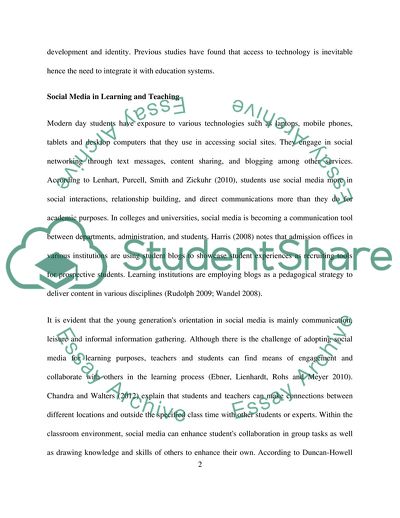Cite this document
(Social Media in Learning and Teaching Literature review Example | Topics and Well Written Essays - 1500 words, n.d.)
Social Media in Learning and Teaching Literature review Example | Topics and Well Written Essays - 1500 words. https://studentshare.org/education/1866015-a-critique-of-the-literature-about-social-media-facebook-in-learning-and-teaching
Social Media in Learning and Teaching Literature review Example | Topics and Well Written Essays - 1500 words. https://studentshare.org/education/1866015-a-critique-of-the-literature-about-social-media-facebook-in-learning-and-teaching
(Social Media in Learning and Teaching Literature Review Example | Topics and Well Written Essays - 1500 Words)
Social Media in Learning and Teaching Literature Review Example | Topics and Well Written Essays - 1500 Words. https://studentshare.org/education/1866015-a-critique-of-the-literature-about-social-media-facebook-in-learning-and-teaching.
Social Media in Learning and Teaching Literature Review Example | Topics and Well Written Essays - 1500 Words. https://studentshare.org/education/1866015-a-critique-of-the-literature-about-social-media-facebook-in-learning-and-teaching.
“Social Media in Learning and Teaching Literature Review Example | Topics and Well Written Essays - 1500 Words”. https://studentshare.org/education/1866015-a-critique-of-the-literature-about-social-media-facebook-in-learning-and-teaching.


